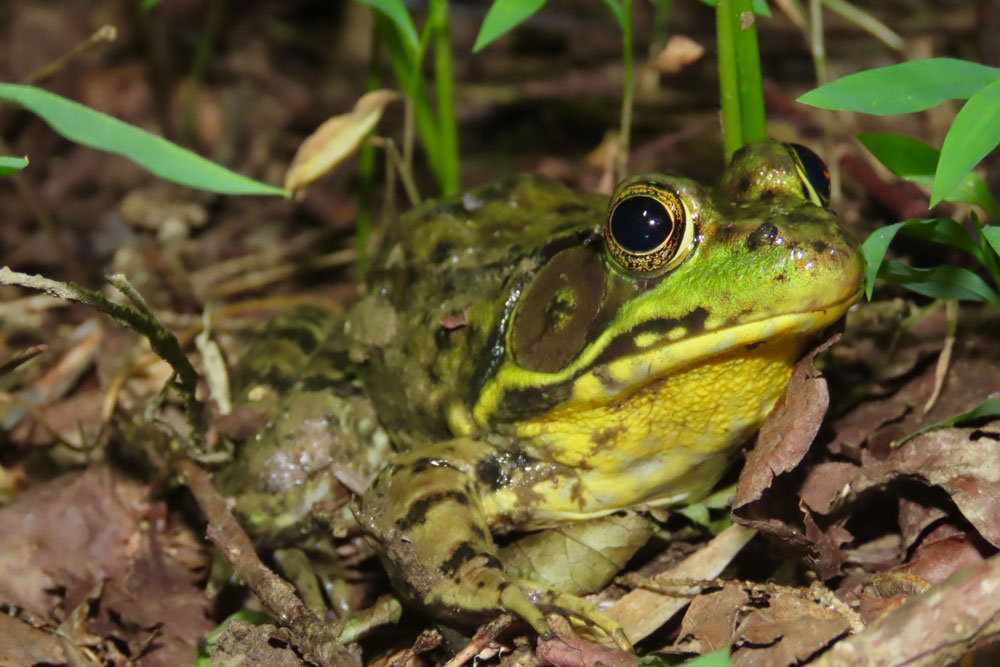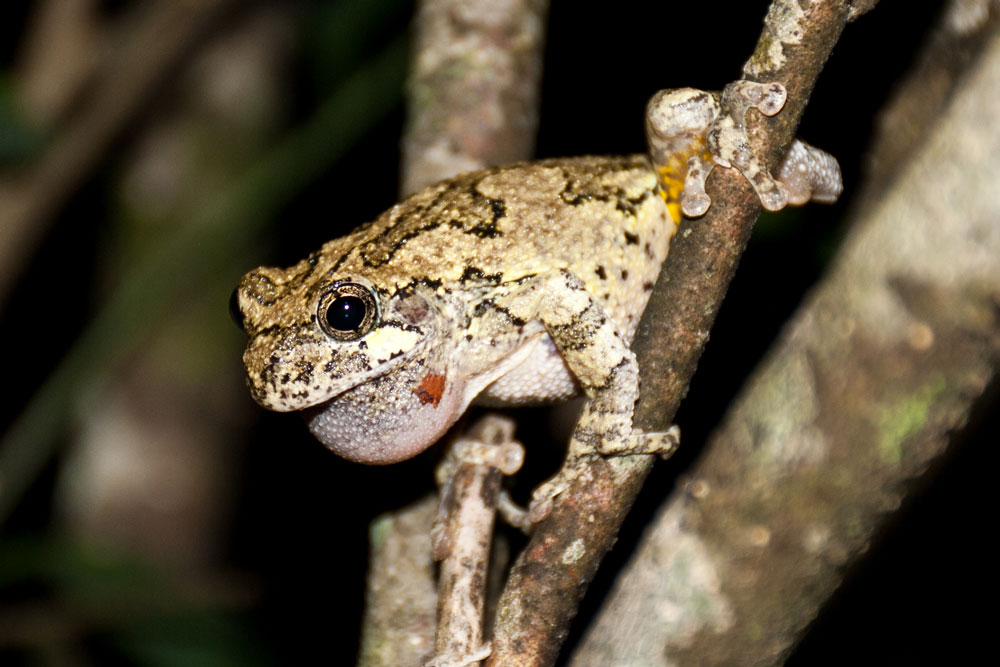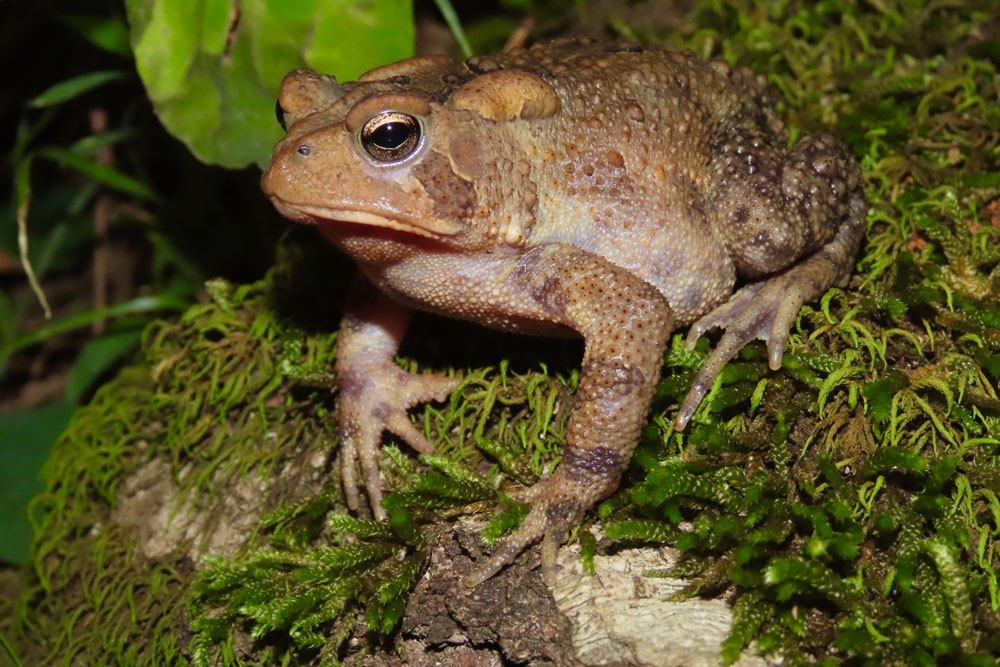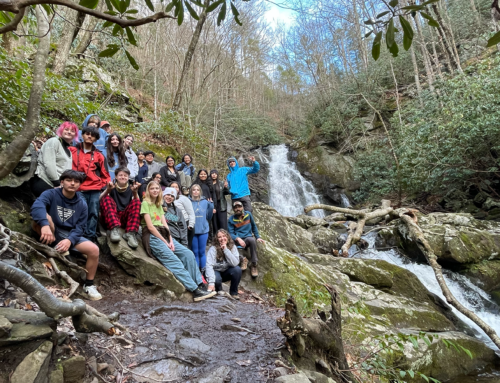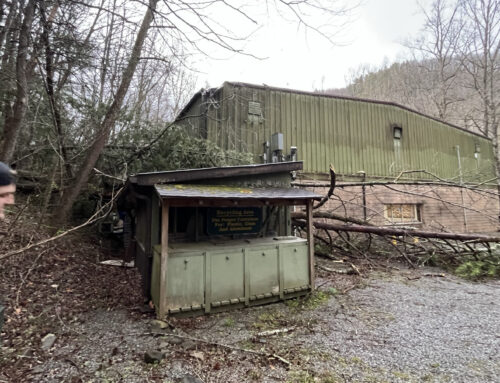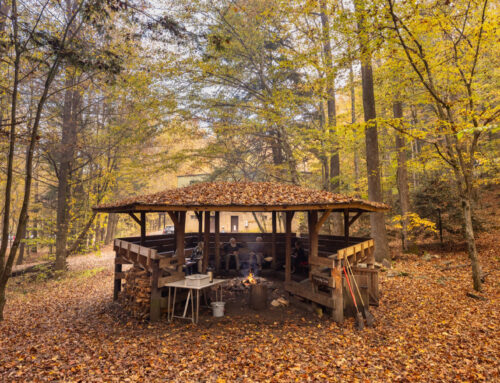Written by Erin Canter, Manager of Science Literacy and Research
It’s the day we’ve all been waiting for! Annual Save the Frogs Day!!
Now in its 12th year, Save the Frogs Day is the world’s largest day of amphibian education and conservation action coordinated by amphibian conservation organization Save The Frogs!
I know what you’re thinking…
“But what about the toads?!”
Good news: technically, toads are frogs, so we have them covered.
Main blog photo: Gray Treefrog. Photos from left to right: Green Frog, Gray Treefrog, and American Toad. Photos by Adam Bean.
What frogs do you see or hear around your home? If you can’t identify them, what do you notice about them? Can you describe their songs? What time of the day/what season do they start to call?
Tennessee has 21 species of frogs and toads. Fourteen of these have been found in the Great Smoky Mountains National Park (including on the North Carolina side).
Frogs and Community Science at Tremont
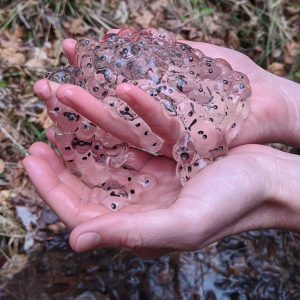
Wood frog eggs. Please keep in mind that we have a permit for the study of wood frogs, and you should not handle their eggs if you come upon them—admire them, but don’t touch!
You may already know that Tremont has a community science project monitoring amphibian breeding by counting egg sacs in vernal (temporary) ponds each winter. But why are we interested in amphibian populations at all, and frogs specifically?
In addition to being an incredibly diverse and interesting group of animals in and of themselves, frogs are also an integral part of the ecosystem at every stage of their life. Frog eggs and tadpoles help feed many creatures, including dragonfly larvae, snakes, raccoons, salamanders and water beetles. Tadpoles clean water by feeding on algae and they compete for resources with mosquito larvae, reducing the number of mosquitoes that survive to adulthood. As adults, frogs eat many insects, including those which spread disease to humans.
Frogs and other amphibians face huge threats, and their populations are declining worldwide. Chemical pollution, climate change, increased predation (by domestic cats and nonnative species), disease (such as chytrid fungus and ranavirus), and habitat loss all impact our frog friends. But there are ways we can help! Make your yard a little frog friendlier by using compost instead of chemical fertilizers, eliminating the use of pesticides, and replacing some of your lawn with native plant species.
If you find a frog in your yard, share a photo or sketch with us! Or upload your sighting to iNaturalist so that researchers can track these important backyard neighbors.



